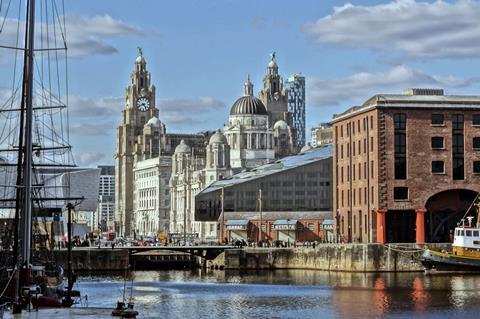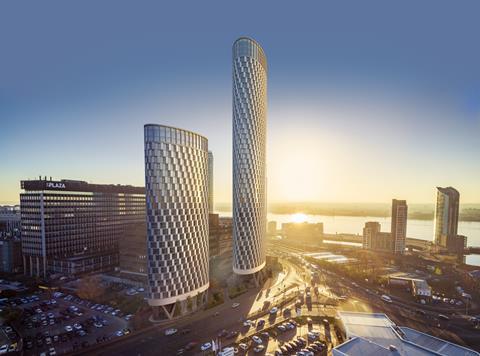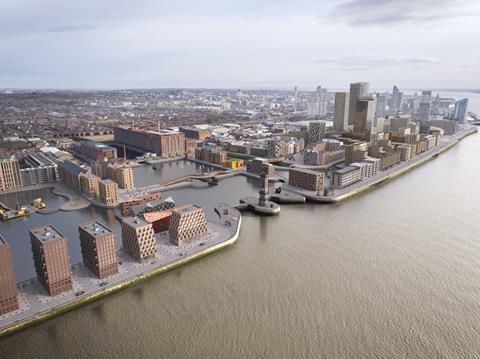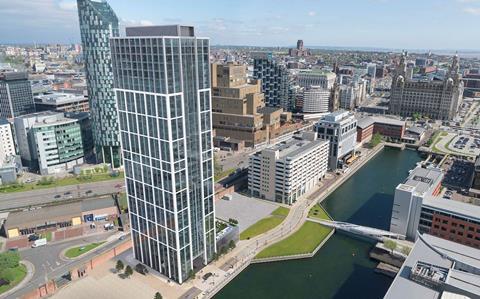World Heritage Committee agrees not to strip city of global accolade – but to keep it on ‘in danger’ list

Liverpool has won more time to demonstrate its commitment to preserving the city’s Unesco World Heritage Site status after being threatened with losing the recognition because of the impact of new development.
Unesco’s World Heritage Committee yesterday agreed to keep the city on its “in danger” list pending further details of measures to secure the setting of gems such as the Three Graces, the Albert Dock and St George’s Hall that have been proposed by the city council and endorsed by Historic England and the Department for Digital, Culture, Media and Sport.
The global heritage watchdog last year warned city bosses that removing the status – which ranks its most famous buildings alongside the Tower of London and the Houses of Parliament in importance – would be an option if a more constructive approach was not taken to preserving them.
Liverpool mayor Joe Anderson said the committee’s decision was “testament to the hard work that has been going on to explain the city’s vision to Unesco” and pointed to a package of strategy measures designed to ensure new development could take place while the city’s heritage was protected.
Anderson said the authoritiy’s Desired State of Conservation for the Removal of the Property from the List of World Heritage Sites in Danger – or DSOCR for short – had shown in “in great detail” the lengths Liverpool envisaged going to in order to balance growh with conservation.
“This is a delicate task and involves all the major city stakeholders working together to understand very specific planning issues and creating solutions that works for the city and Unesco,” he said.
David Henshaw, chairman of Liverpool’s World Heritage Site taskforce, was more circumspect about the implications of the World Heritage Committee’s decision, but he accepted yesterday’s decision was very good news.
“Liverpool is still on the danger list so there’s much work to be done,” he said. “Fortunately much progress has been made and now there is a clear roadmap to develop.”
“As well as greater communication with the WHS committee we also need to focus on how we engage more with stakeholders and communities so they can better understand how the site can shape the city’s future.”
Henshaw said inviting the WHS committee to Liverpool would be “a crucial next step” so members could see first hand the progress the city was making.
Unesco’s concerns focused on developer Peel Holdings’ proposals for the £5.5bn Liverpool Waters regeneration scheme, which covers 60ha of disused docks. It was particularly worried about the height of some components of the scheme, which gained outline planning consent in 2012, and the lack of consideration for heritage sites displayed by the city council in relation to other planning consents.

Liverpool’s response was to come up with a package of measures outlined in the DSOCR, that includes the creation of a new city “skyline policy”; new neighbourhood masterplans that impose height restrictions; and an independent taskforce to advise the city mayor on how to safeguard its heritage assets.
A report to yesterday’s World Heritage Committee meeting in Bahrain was clear that while the DSOCR was a step in the right direction, many blanks remained to be filled.
“The current draft DSOCR does not yet incorporate sufficient specific commitment regarding development controls – including specific view line and skyline controls – and reduction to the existing outline planning permission to remove the threats to the authenticity and integrity of the property,” it said.
“The DSOCR, as currently proposed, relies heavily on future guideline documents which are still in preparation, namely the local plan, the neighbourhood masterplans, the skyline policy and the proposed revisions to the supplementary planning document.”
Unesco said that it would be necessary to assess the content of the documents to “establish a clear commitment by the state party to limit the quantity, location and size of allowable built form” in the buffer zone surrounding Liverpool’s World Heritage Site before its concerns would be allayed.
It said “serious concerns” remained over the Liverpool Waters scheme and urged Liverpool and the government to introduce a moratorium on new development within the designated World Heritage Site and its buffer zone until the DSOCR was “completely finalised and approved”.
The report also noted that while Peel Holdings has said it will not seek to build out Liverpool Waters to the scale and massing permitted by the Chapman Taylor-designed masterplan that was approved in 2012, the permission is neverthless valid until 2042 and includes a 55-storey tower.
Last month Peel unveiled images of its new masterplan for parts of Liverpool Waters. Overseen by Planit-IE, it relocates the development’s proposed Central Park closer to the River Mersey, redesigns Clarence Square at Central Dock and alters the layout of various pedestrian areas to prioritise pedestrians and cyclists and maximise views of the river.















No comments yet